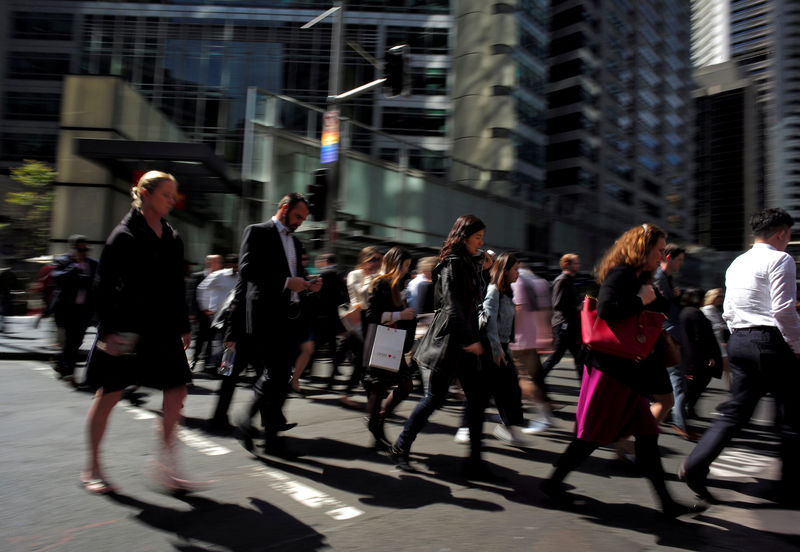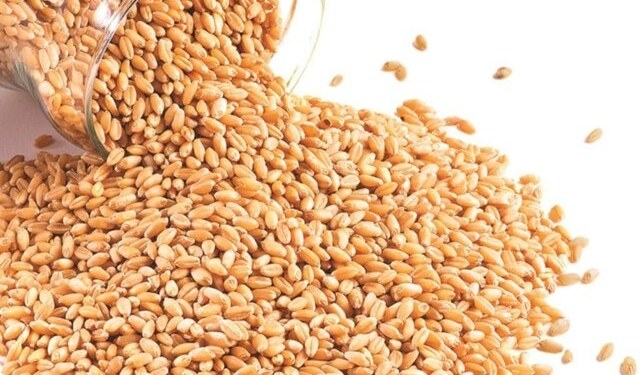 © Reuters. FILE PHOTO: Office workers and shoppers walk through Sydney’s central business district in Australia
© Reuters. FILE PHOTO: Office workers and shoppers walk through Sydney’s central business district in AustraliaBy Wayne Cole
SYDNEY (Reuters) – Australian employment rose for a 13th straight month in October, the longest stretch of gains since the early 1990s, while the jobless rate dipped to its lowest in over 4-1/2 years.
Thursday’s figures from the Australian Bureau of Statistics showed 3,700 net new jobs were eked out in October. That was short of forecasts of a 17,500 rise, but September was revised up to a solid increase of 26,600 from the first estimate of a gain of 19,800.
The detail was also upbeat with full-time jobs climbing 24,300, bringing gains for the year to a blistering 298,000.
The jobless rate dipped one tenth of a percentage point to 5.4 percent, under forecasts and the lowest since February 2013.
Health care has seen the lion’s share of new jobs thanks in part to a government expansion in support for child care and carers, while the steady aging of the population should make the sector only bigger over time.
Construction jobs have also been on the rise amid a surge in public spending on infrastructure, a revival the Reserve Bank of Australia (RBA) has called a new “engine of growth”.
“The program of public works in the pipeline is now much higher than usual,” said RBA Assistant Governor Luci Ellis earlier this week in an optimistic take on the outlook.
“Improving transport infrastructure could help boost productivity across a range of both traditional and new industries,” she added.
“We are hearing from our contacts in industry that it is also spurring private businesses to invest in new equipment.”
NO PAY DAY
Yet while firms might be scooping up workers they are not so keen to pay them more, leaving wage growth near record lows and putting an unwelcome cap on consumer spending and inflation.
“Despite strong jobs growth, there is still plenty of slack in the labor market,” said CBA senior economist John Peters.
“This slack will need to be substantially reduced before wage pressures crank up,” he added. “In this environment, talk of rate hikes over the next year is unrealistic.”
That outlook meant the jobs data had only a limited impact on financial markets, with the local dollar up 0.1 percent at $0.7594
Interest rate futures are not fully priced for a hike in the 1.5 percent cash rate until early 2019.
The scrooge-like pace of wage rises is a major reason the RBA recently forecast core inflation would not reach the floor of its 2 to 3 percent target band until early 2019, a year later than previously hoped.
Figures out on Wednesday showed annual wage growth edged up to 2.0 percent in the third quarter, but missed forecasts of 2.2 percent and were only a sliver above inflation at 1.8 percent.
And that tiny pick-up owed much to a relatively generous 3.3 percent hike in the minimum wage which was forced on reluctant employers by the government regulator.
Fusion Media or anyone involved with Fusion Media will not accept any liability for loss or damage as a result of reliance on the information including data, quotes, charts and buy/sell signals contained within this website. Please be fully informed regarding the risks and costs associated with trading the financial markets, it is one of the riskiest investment forms possible.
Source: Investing.com




























